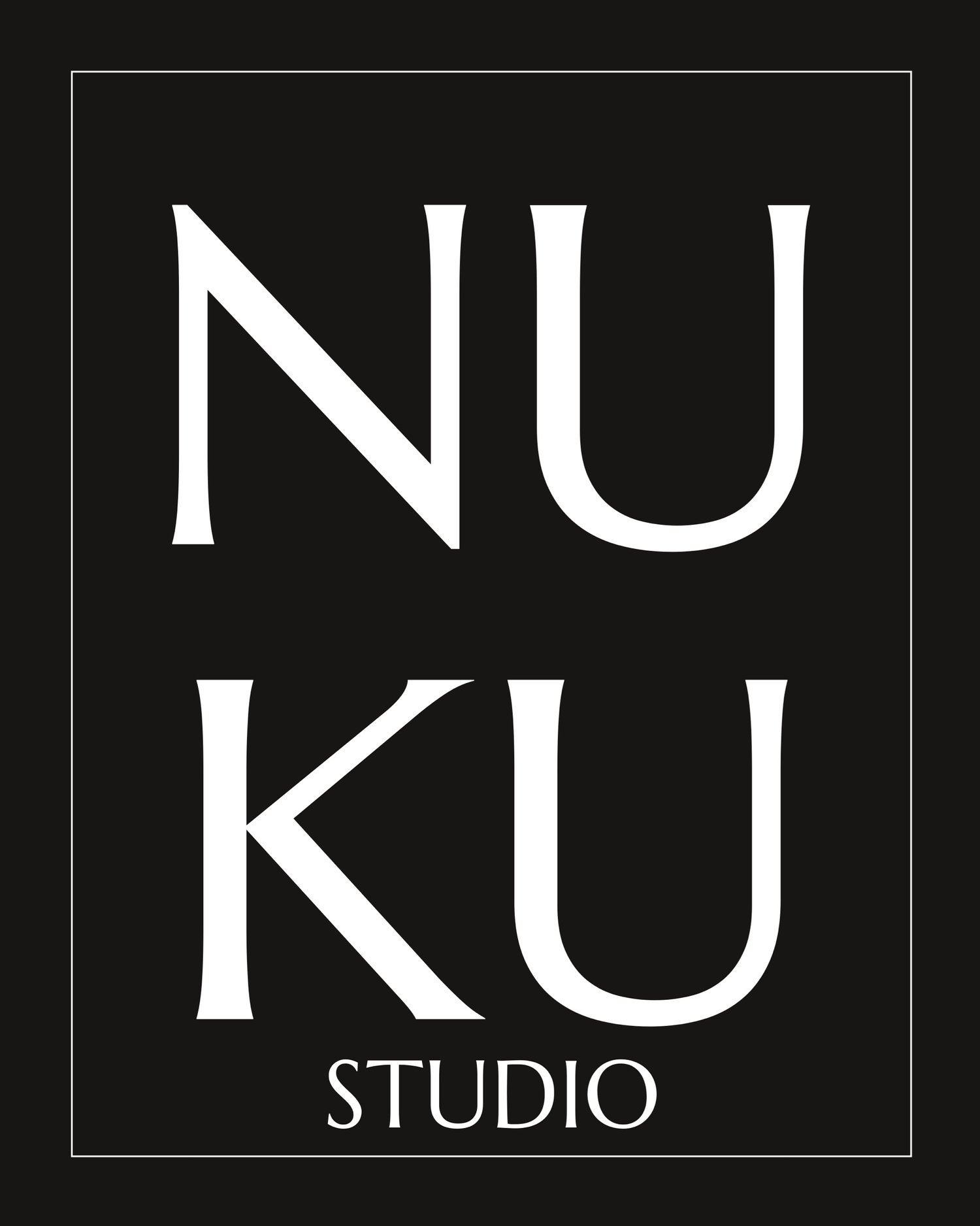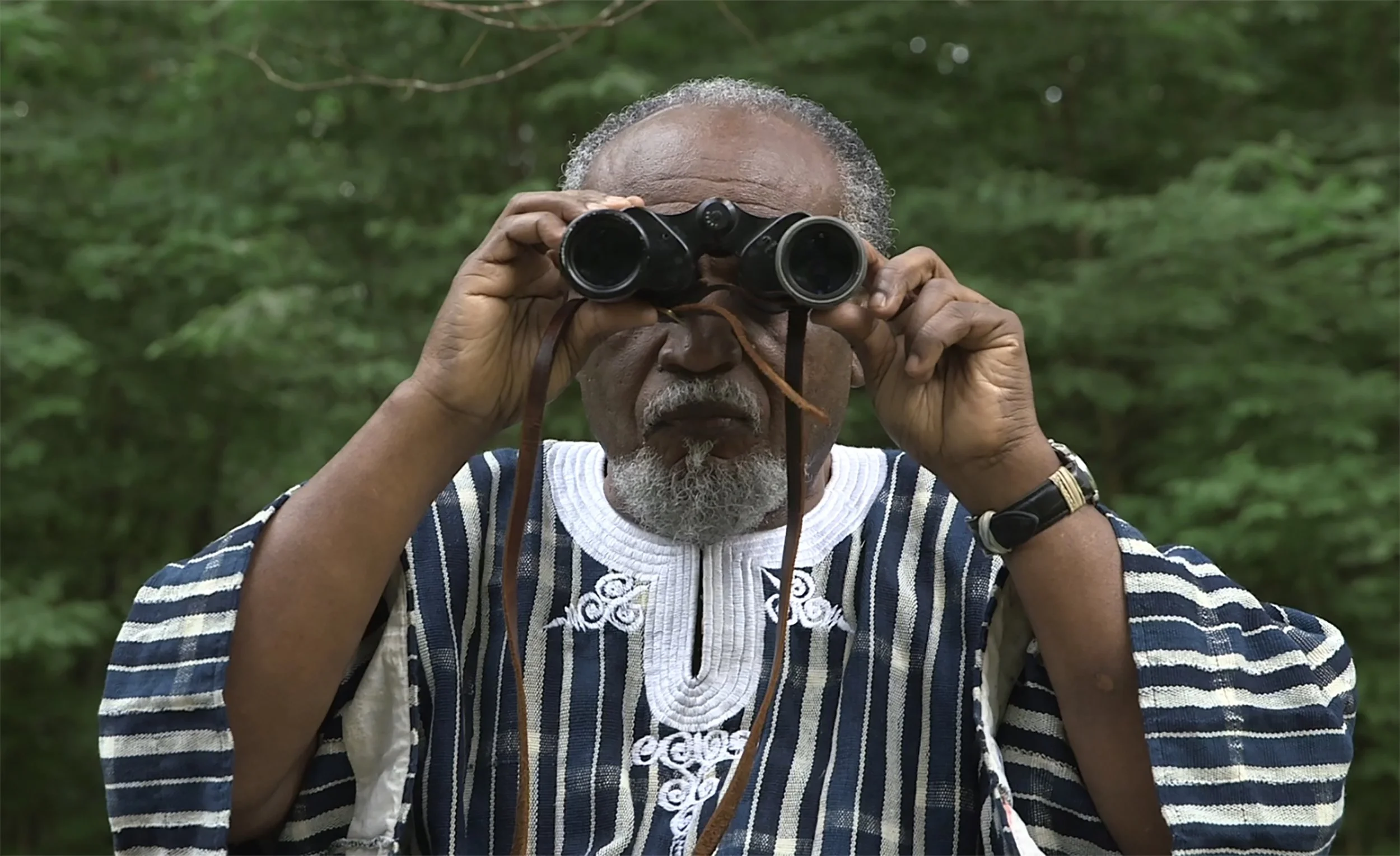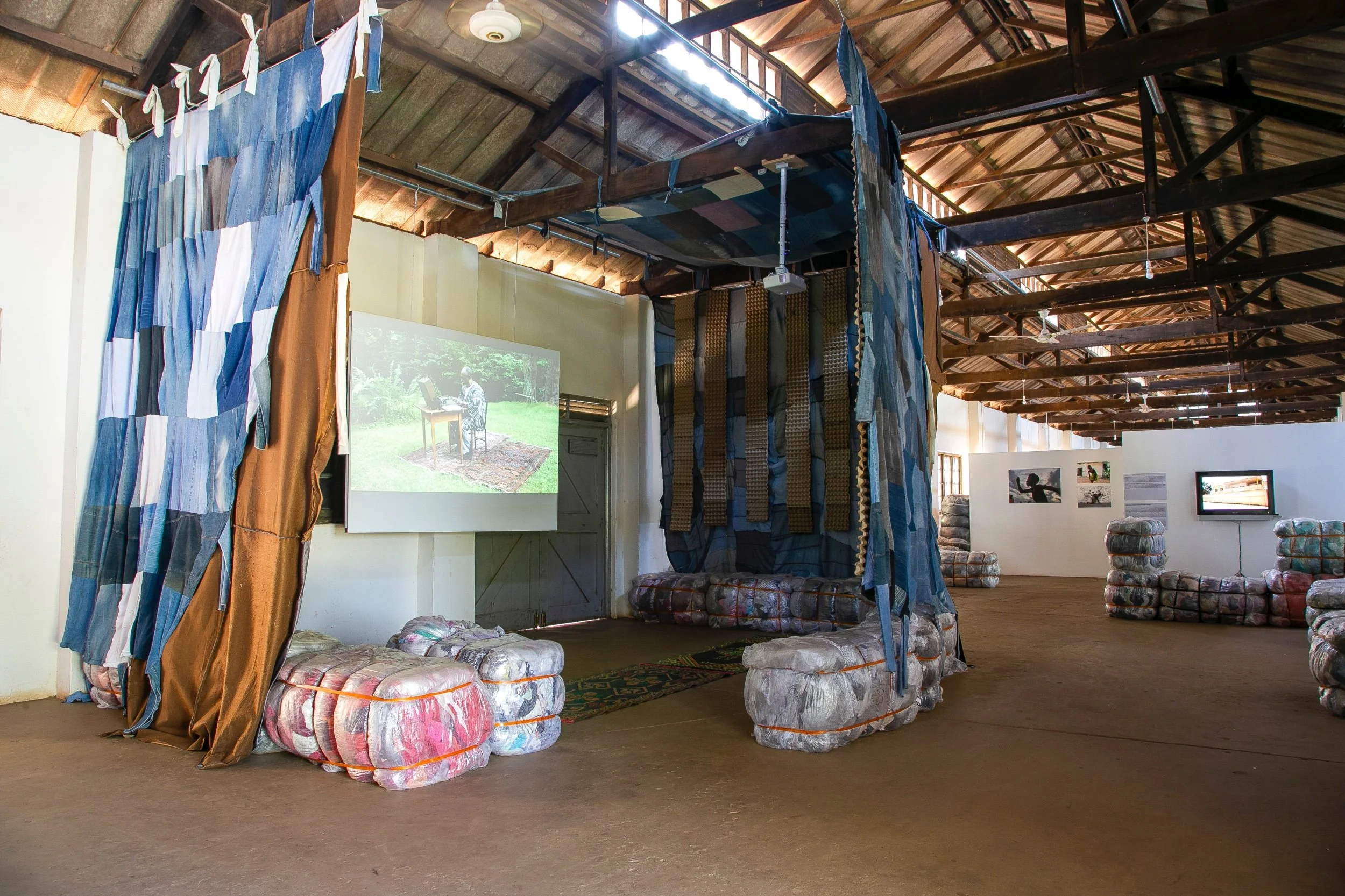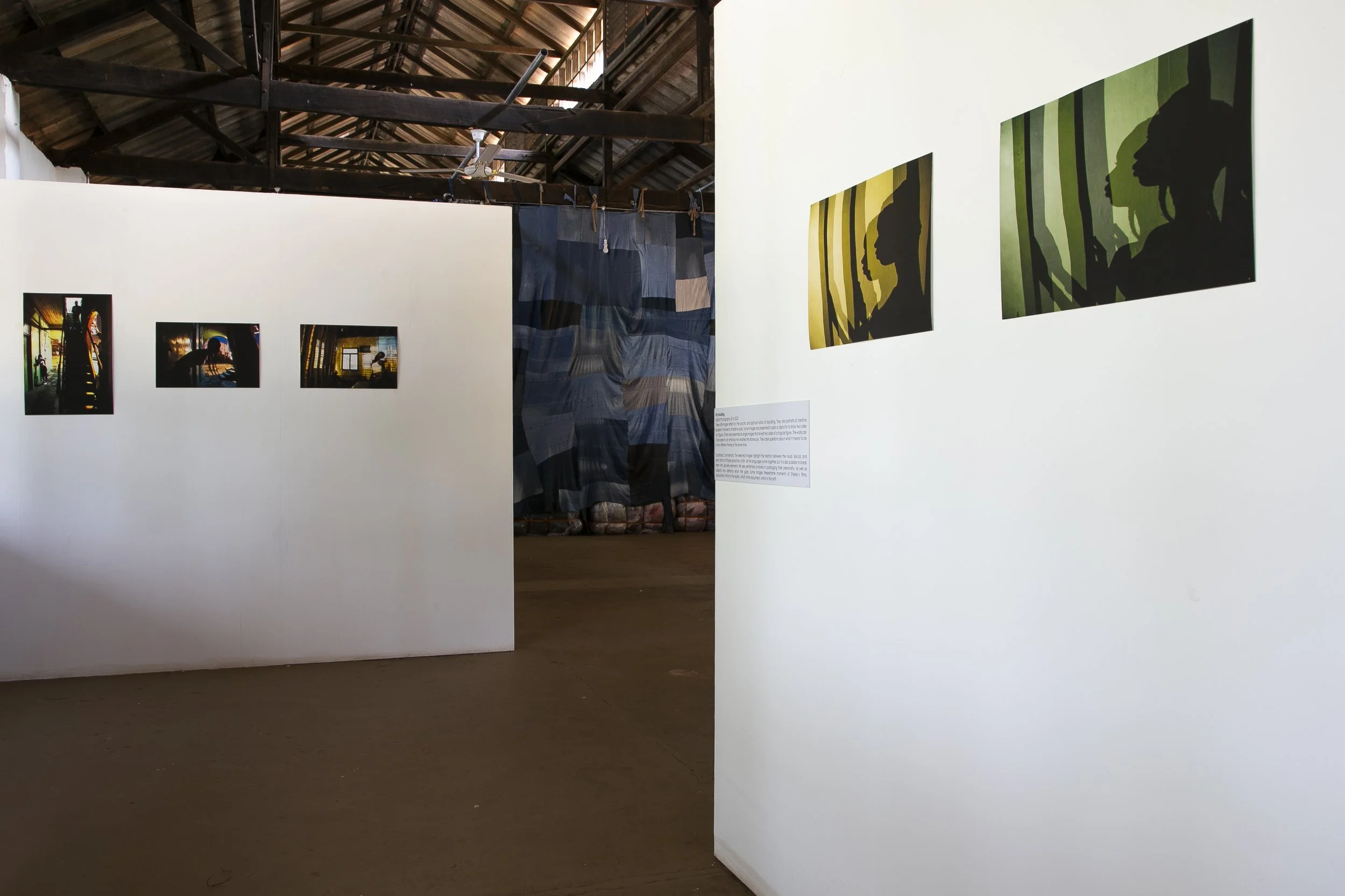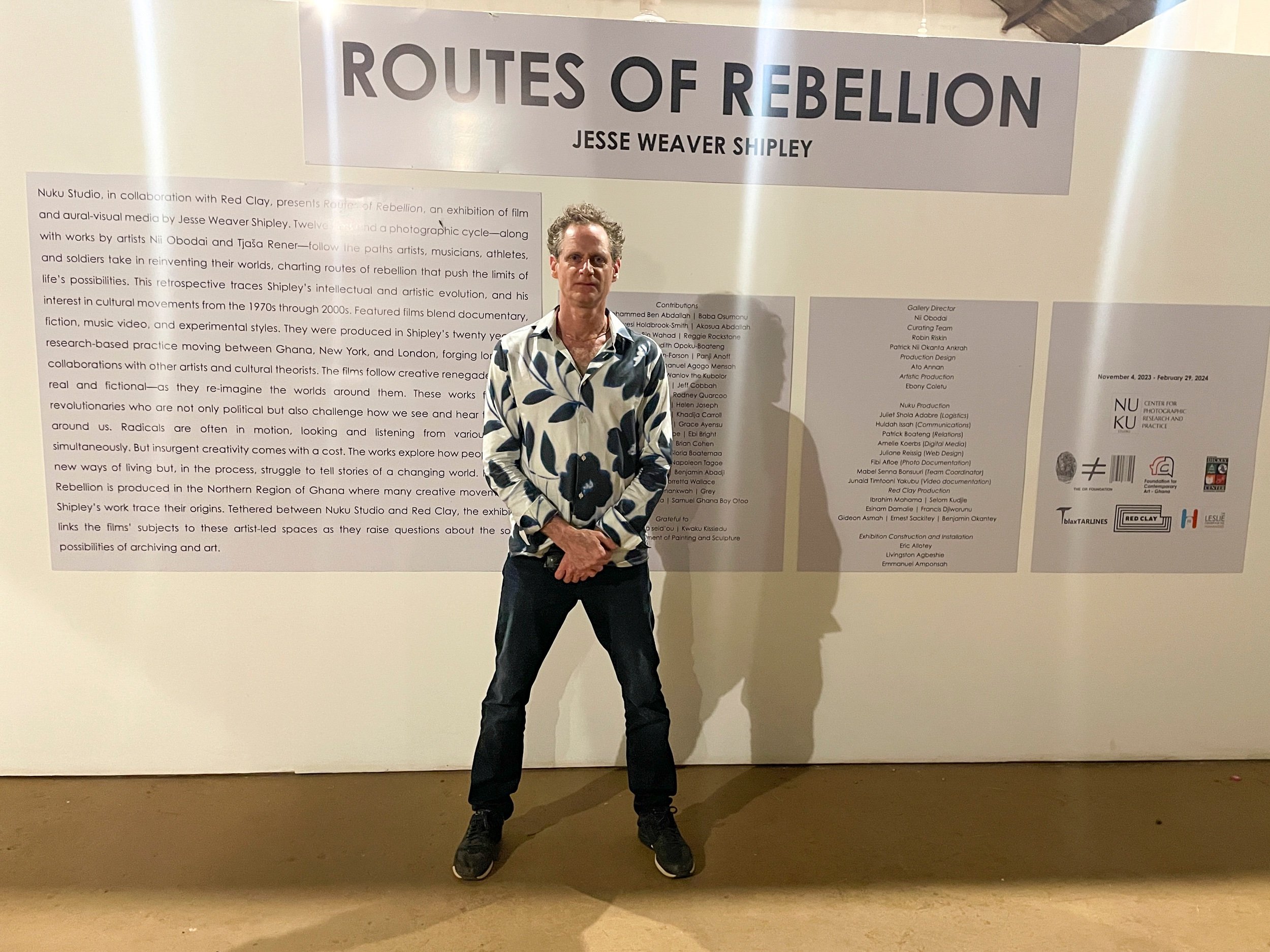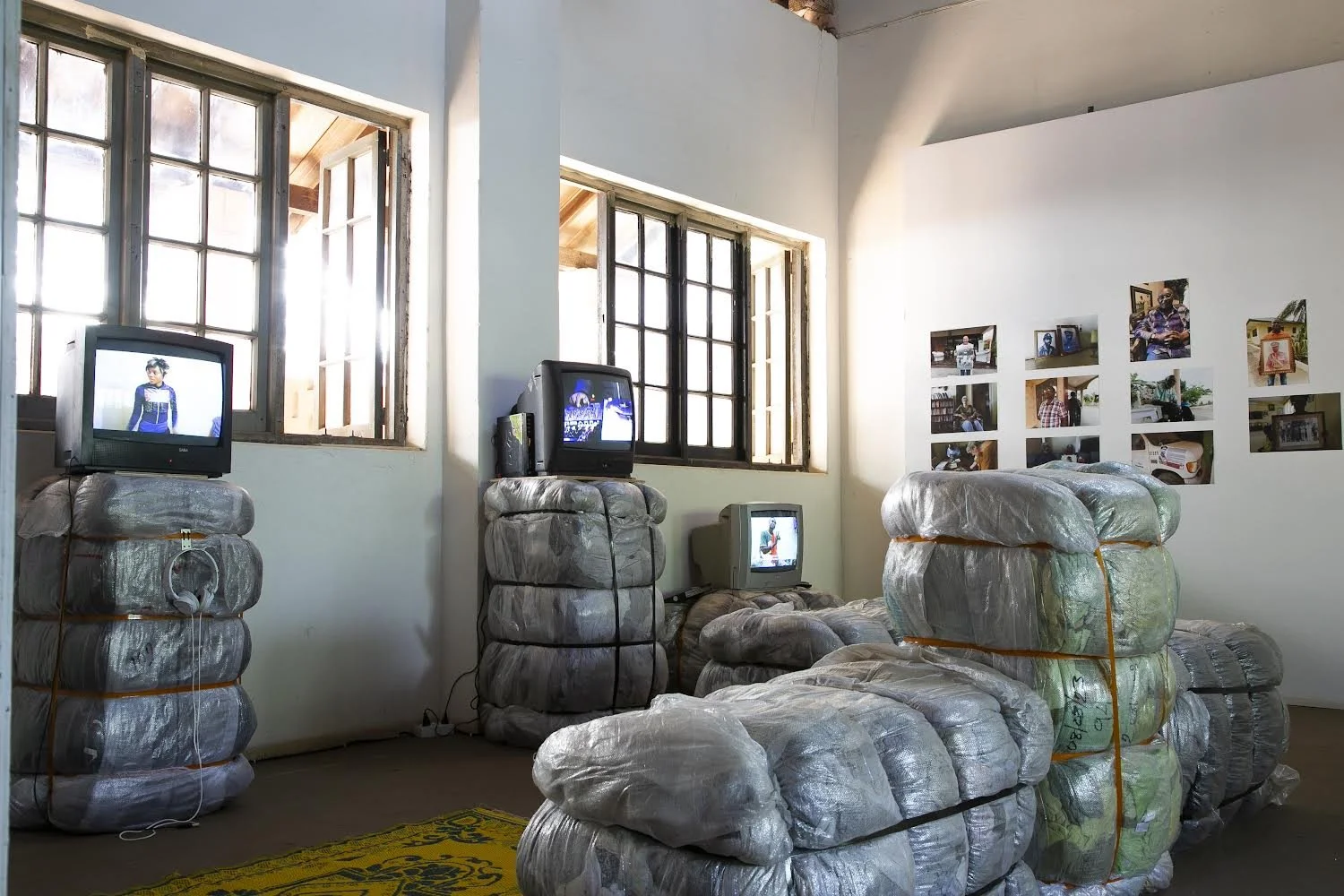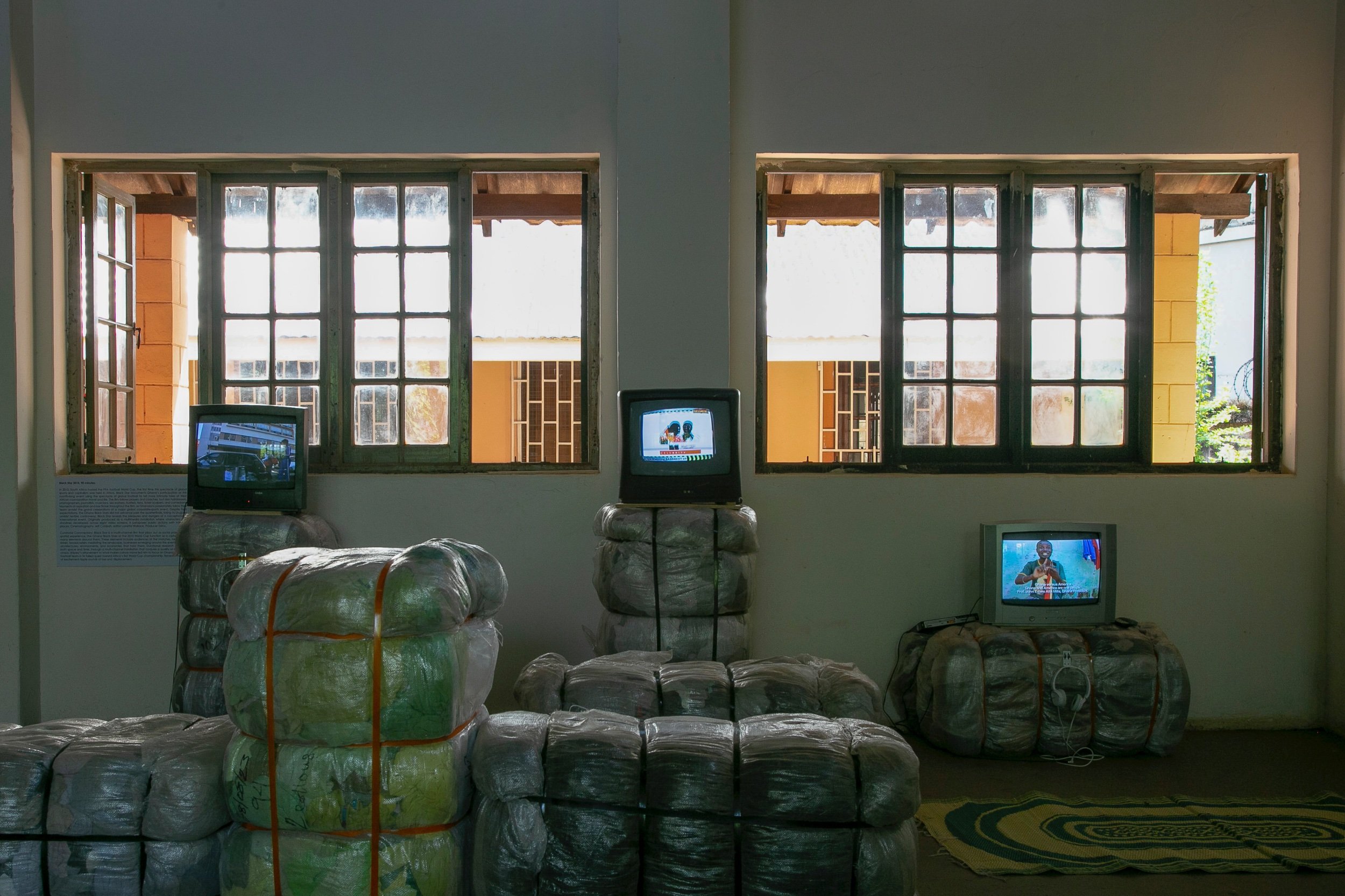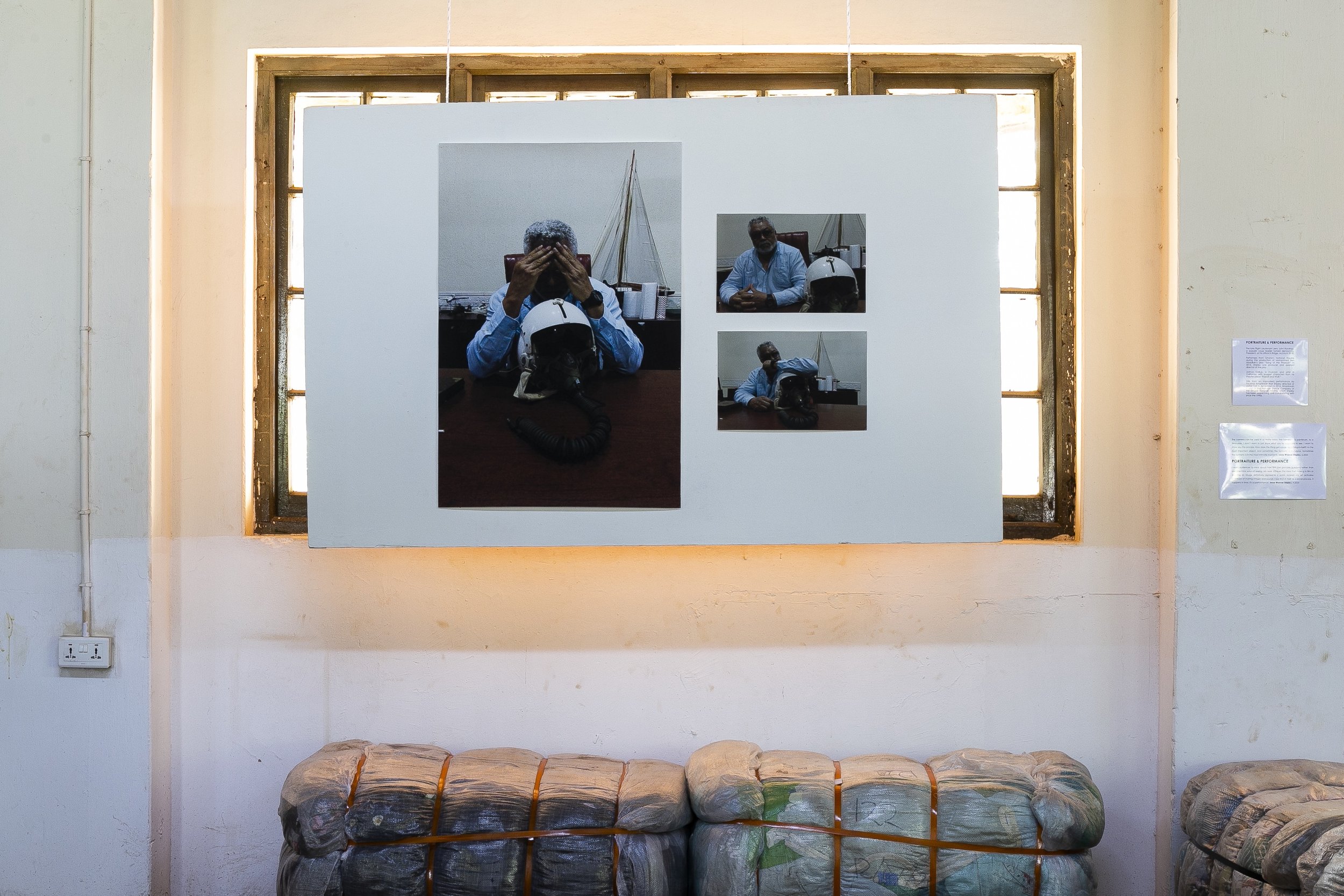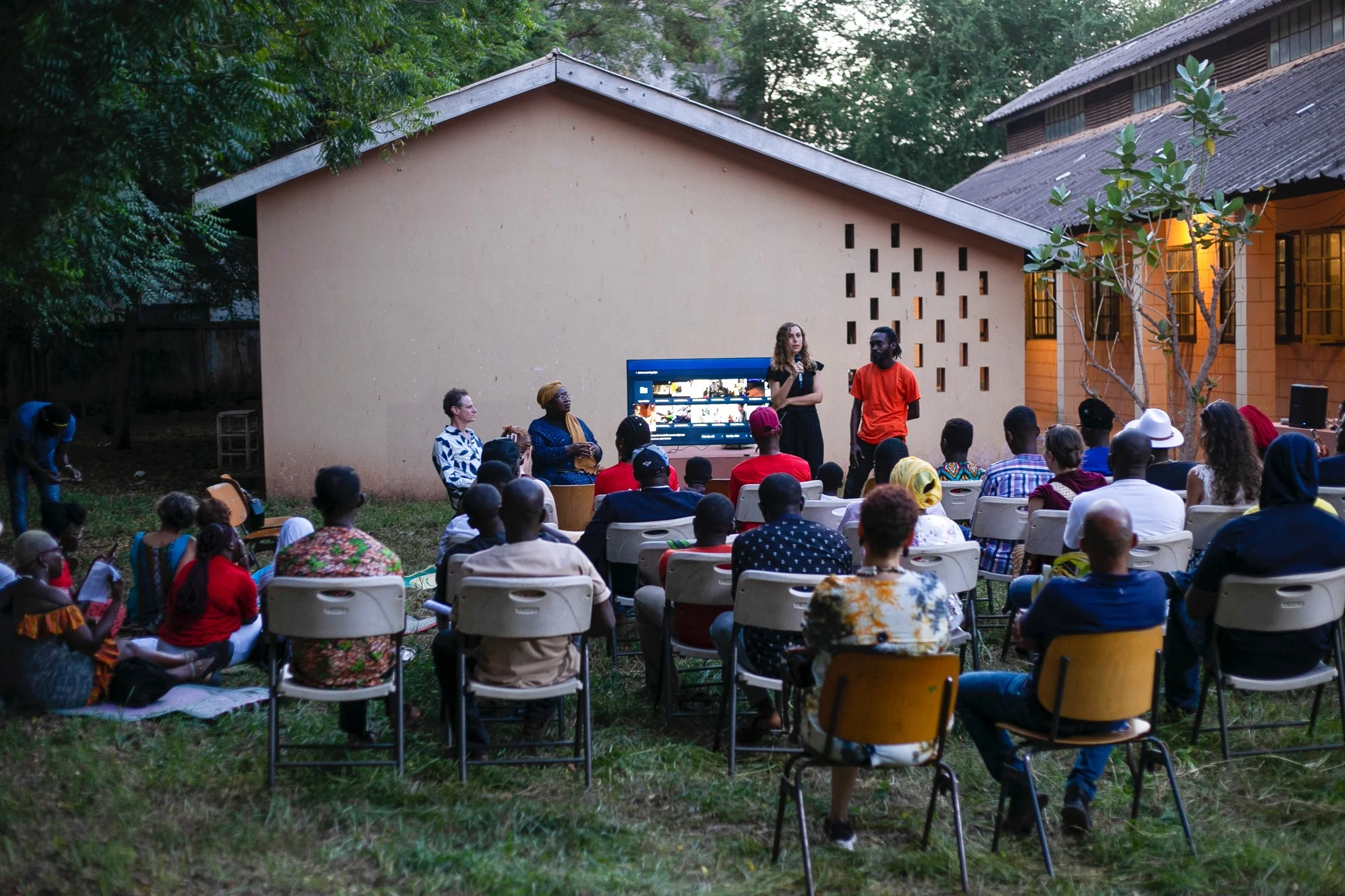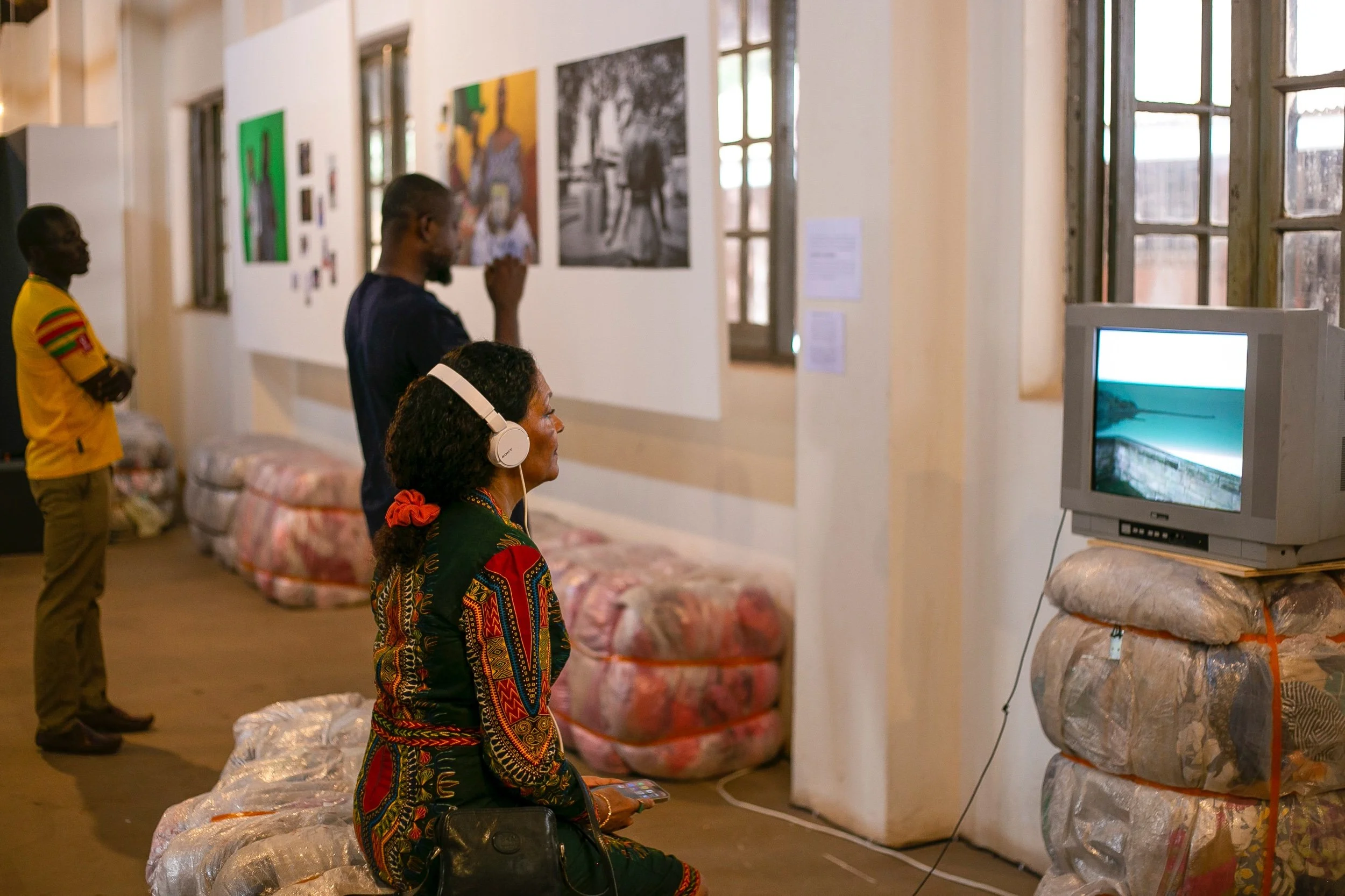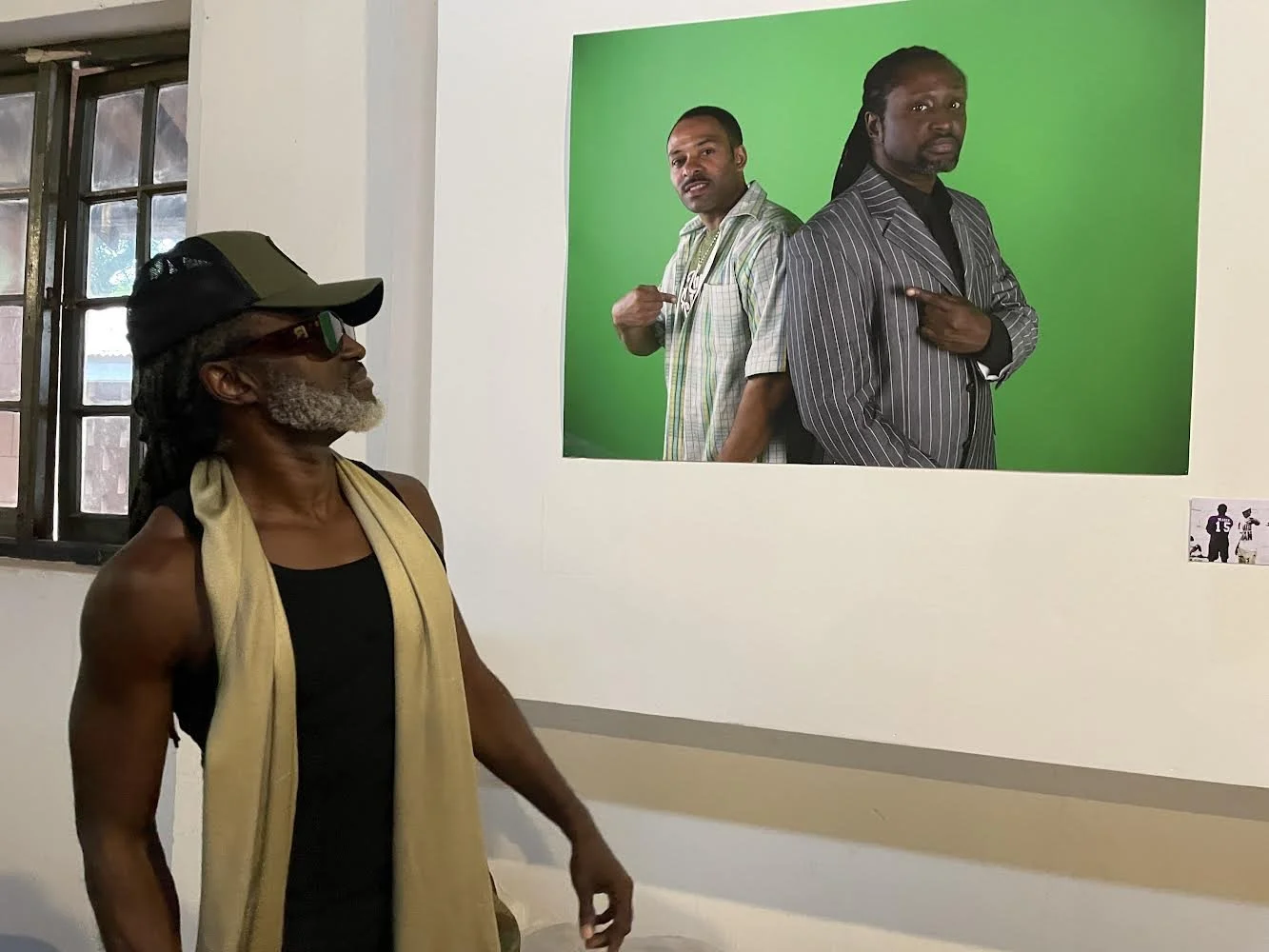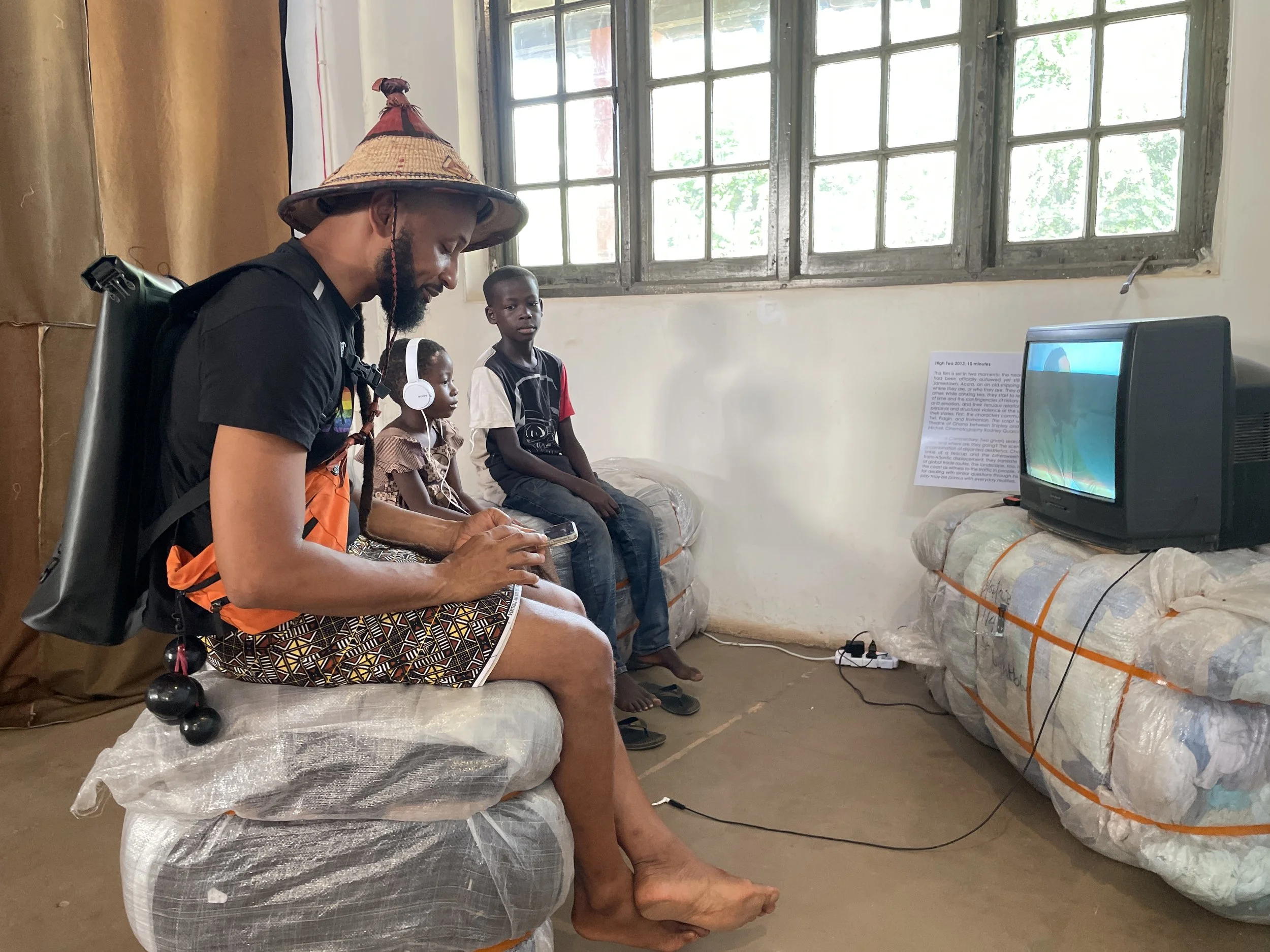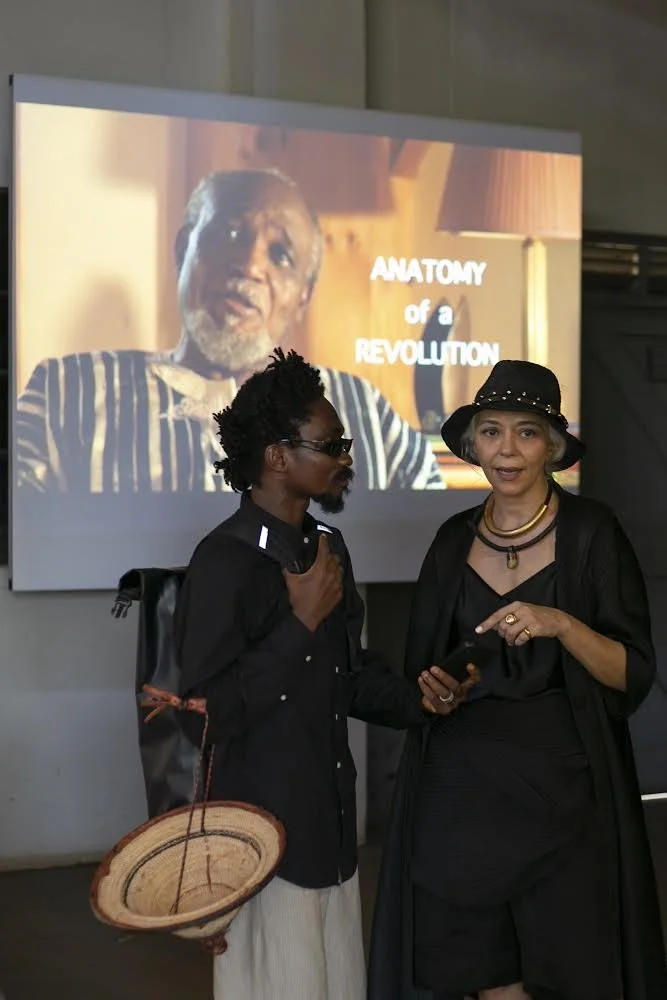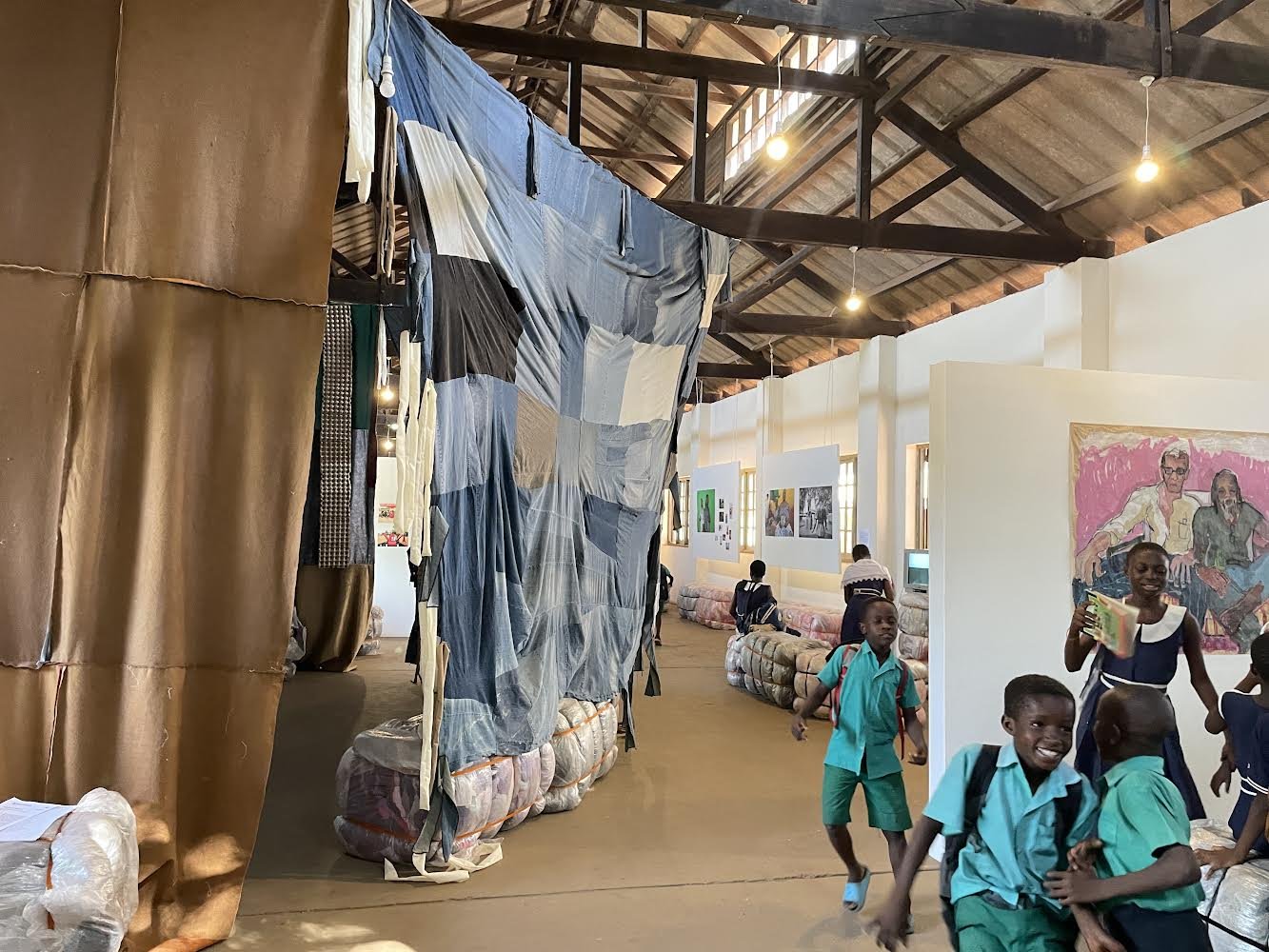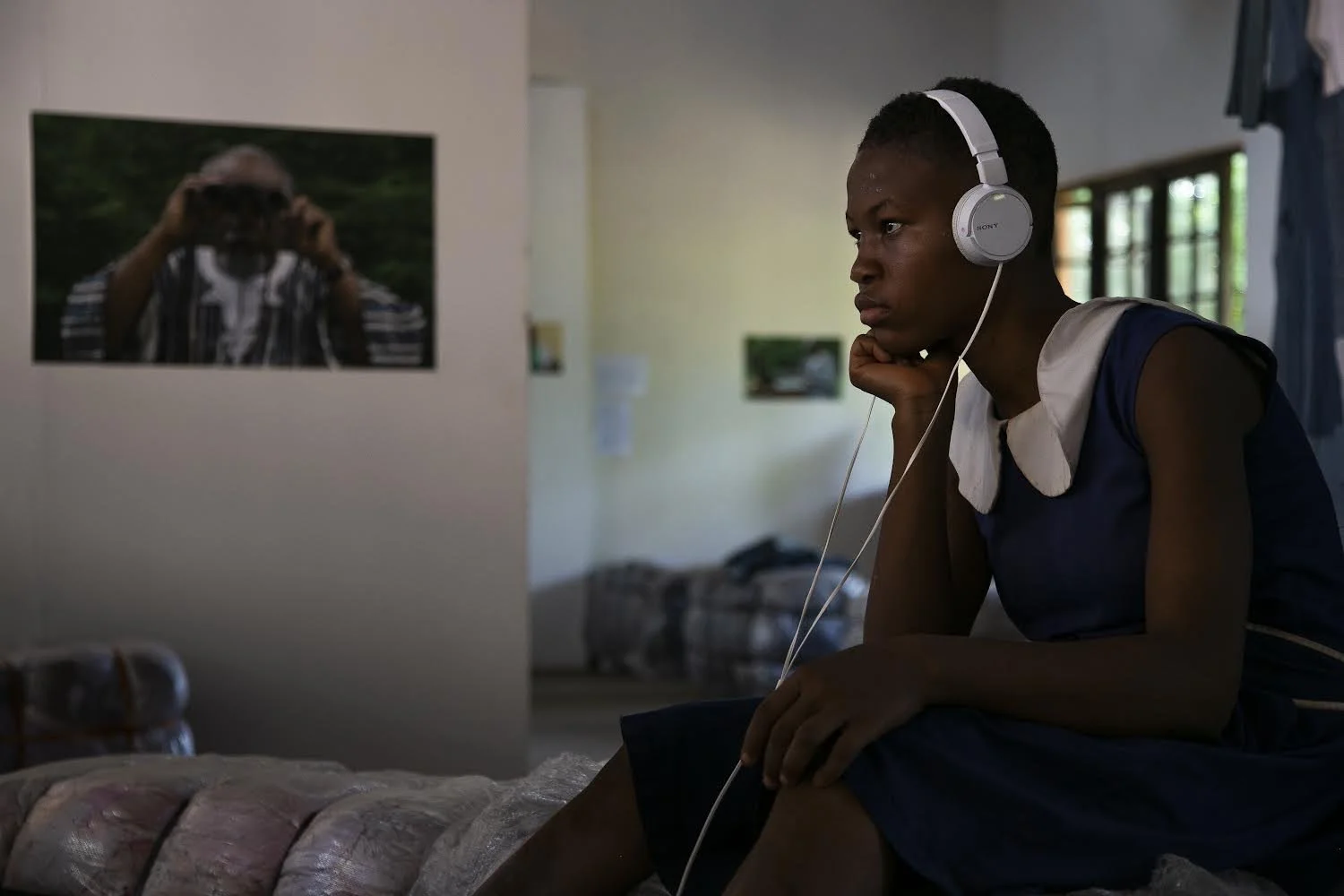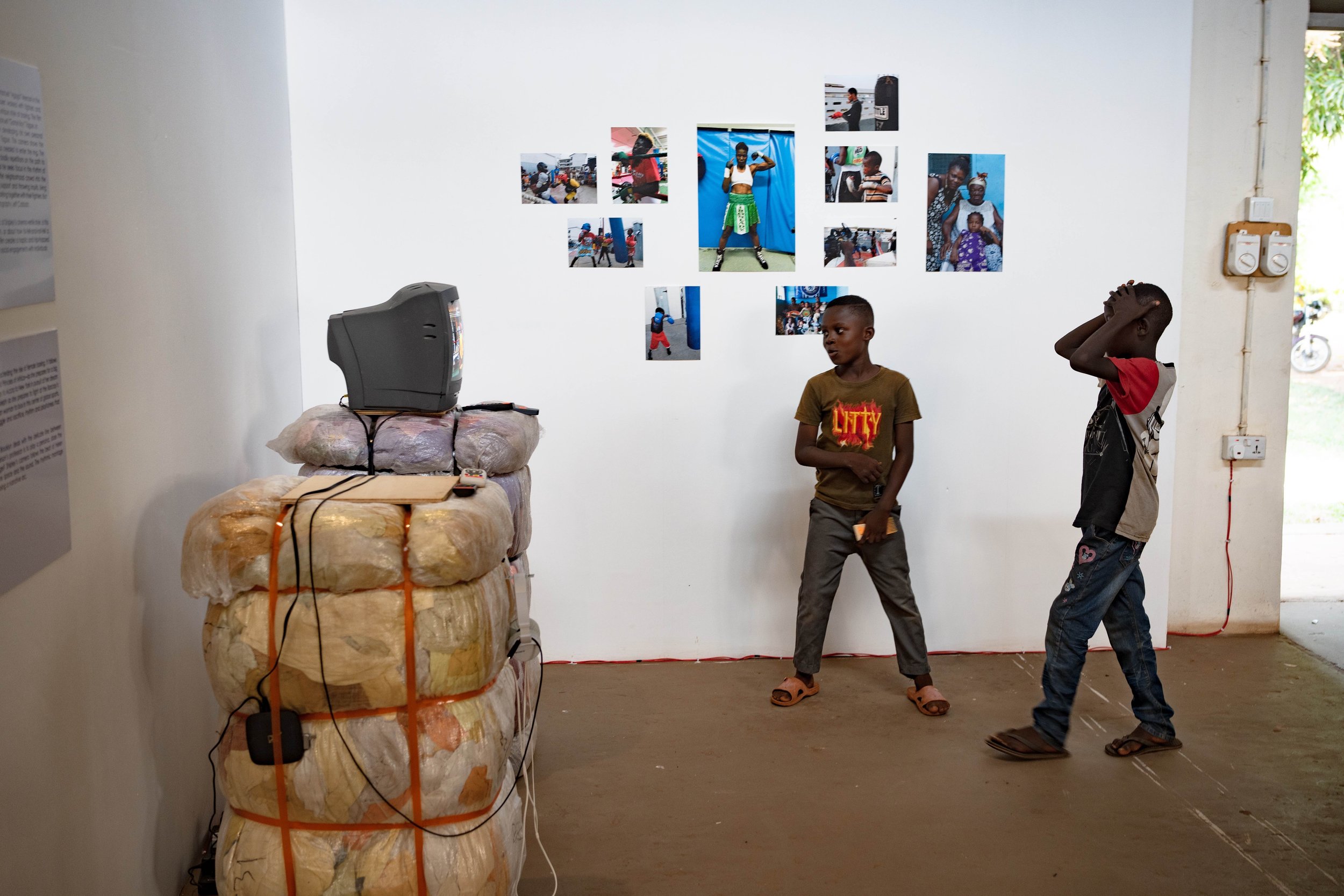Mohammed Ben Abdallah from Anatomy of a Revolution by Jesse Weaver Shipley, 2023
Since November Nuku Studio’s Center for Photographic Research and Practice in Tamale has been transformed for Routes of Rebellion, a major solo exhibition of films and audio-visual media by Jesse Weaver Shipley. The show explores how revolutionaries transform our perception. The works draw on the aesthetics of anti-imperial cultural and political movements from the 1970s through 2000s, tracing the paths that radical artists, athletes, and thinkers travel in confronting power. Shipley’s images and sonic work challenge narrative conventions and experiment with storytelling by blending documentary, fiction, music video, and experimental techniques. The exhibition space is designed using upcycled bales of used clothing embodying how aesthetics are always both the material and the ephemeral.
Shipley’s twelve installation films, photographic cycle of eighty images, and two-channel video installation at nearby Red Clay follow real and fictional creative renegades who dare to be different.
“Rebels are often people who move between worlds, culture-brokers constantly in motion, looking and listening from various angles simultaneously,” says Shipley. “But insurgent creativity comes at a cost. As people imagine new ways of living, they struggle to be understood.” In telling stories of people transforming themselves and the world, Shipley reveals how the past haunts the present.
Photo by Fibi Afloe
Shipley’s cinematic style envisions image and sound-making as ongoing dialogues rather than stable methods of knowledge production. He made these works while forging long-term collaborations with other artists and cultural theorists in twenty years of research-based practice moving between Ghana, New York, and London. His commitment to linking social research with experimental image-making epitomizes Nuku Studio’s mission of using photography as a tool for cutting-edge cultural investigations.
“Shipley is a storyteller for our times,” says Nuku Studio Director Nii Obodai who conceived of the show. “He is not above the story but inside it and speaks from experience. He builds his work through deep relationships with people and places, and in the process, his subjects become co-creators of the narratives. Part of Shipley’s skill and ‘privilege’ as an outsider to Ghana is that he forges connections and accesses a breadth of stories that many of us cannot easily retrieve. He brings out our history, our politics, and our arts in ways that few of us have been able to tap into. Isn’t that the job of the artist as researcher? To take what we can’t see and bring it into the physical realm,” says Obodai. “It is a great honor for Nuku to bring these stories of revolutionaries and movements into one interconnected space. We hope that students and artists in Ghana and around the world can see this exhibition as another starting point for inspiring broad and deep investigations.”
The show was curated by Robin Riskin and Patrick Nii Okanta Ankrah of BlaxTARLINES and designed by artist-producer Ato Annan to sustain a narrative about power and history across Nuku’s vast space. Originally built in the mid-20th century as a printing press, the open gallery has been converted into multiple intimate soundscapes constructed out of stacked bales of compressed second-hand clothes sorted by color. These fashion world cast-offs were contributed by the OR Foundation reflecting their concern with the global impact of waste in clothing and creative industries. Each film is screened in a unique space carved out of these discarded materials as well as sewn patchwork fabrics hung from the rafters and lined with egg crates. These temporary materials contrast with the hard edges and grand proportions of the timber, concrete, glass, and tile building. They create quiet corners while maintaining expansive sightlines as natural light filters through windows set into the eaves illuminating the work. Billowing sounds of hiplife music, thudding boxing gloves, and military coup announcements blend as viewers move amongst crisp film projections and old box televisions perched on compressed discarded t-shirts. Unframed digital images hang amidst the fabrics of the installation.
Photo by Fibi Afloe
This Nuku exhibition challenges the ways artists have turned to scholarly practices of archiving and ethnographic research while intellectuals have experimented with new media to express philosophical insights. Shipley offers complex blended genres that infuse aesthetic forms with both intimate knowledge and fluid technical skill. His work creates a dialogue between philosophies of power and visceral practices of representation.
The design entices viewers to imagine creative space as ephemeral. It raises questions of economic sustainability, cultural loss, and struggles to remember the past. In the coming months, the artist and gallery are planning to upcycle the clothing bales through artistic and community collaborations, so that after the exhibition closes, it will disappear into memory.
Routes of Rebellion is produced in collaboration with Ibrahim Mahama’s Red Clay, where Shipley’s title piece, the two-channel video “Routes of Rebellion” is installed on large flat screens. Its flickering images and haunting sounds create a dialogue with Mahama’s monumental sculptures, images, and collections. This collaboration between Nukuand Red Clay pushes how these artist-led spaces imagine political and cultural rebellion and the social possibilities of archiving and art.
Routes of Rebellion is at Nuku Studio and Red Clay in Tamale, Ghana through 29 February 2024.
Artist Bio
Jesse Weaver Shipley is an artist, filmmaker, writer, and ethnographer who explores the links between aesthetics and power. His work examines both spectacular multi-media events and mundane daily life in Ghana, Nigeria, South Africa, Britain, and North America. His films, images, and multi-media installations experiment with storytelling and portraiture, drawingon a variety of phenomena, including analogue and digital technology, popular culture, music, theatre, urban design, labor, race, gender, and mobility. He is Professor of African and African American Studies and Oratory at Dartmouth College in the United States. His art has shown across Europe, North America, and Africa. He is the author of numerous articles and books including Living the Hiplife: Celebrity and Entrepreneurship in Ghanaian Popular Music and Trickster Theatre: The Poetics of Freedom in Urban Africa. He is currently completing two books: Ghana’s Lost Revolution: Black Sovereignty and the Global Cold War Order in Ghana 1979-1983; and Aesthetics of Revolution: Political Performance and the Shape of Power. He currently lives and works in New York City.
Photo Gallery
Video fly-through (video by Timtooni Junaid Yakubu)
Thanks to the following partners and sponsors
